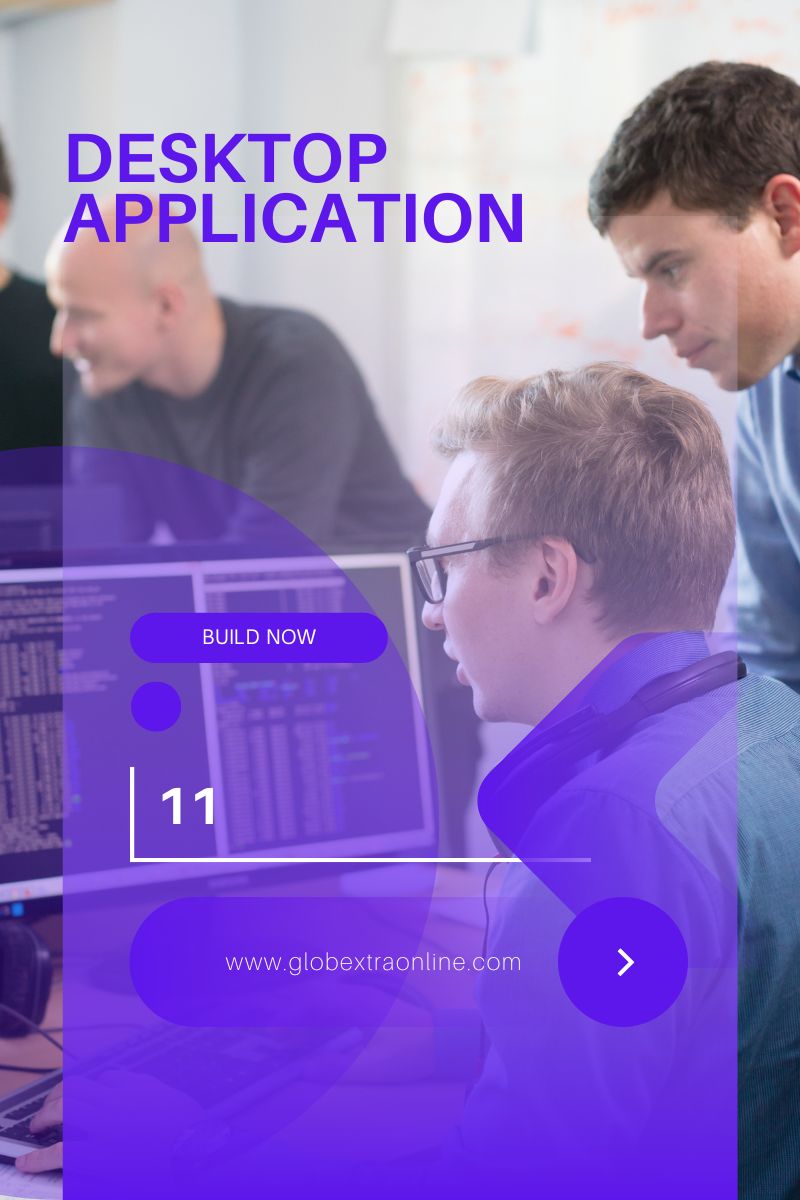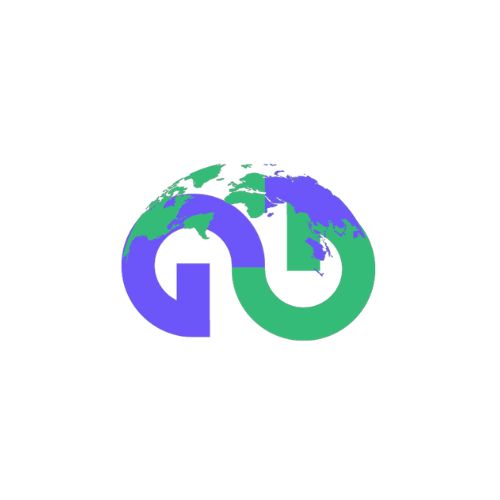In a world ruled by mobile applications or portable devices, it might surprise you to know that desktops are still the preferred choice for organizations at large, and why not, as they offer several functionalities like the ability to seamlessly work on multiple windows, customizable options, hassle-free downloads, etc. Need further convincing? Read our blog on desktop applications and be guided through 11 logical truths that will make you re-imagine the way you see desktops.
At Globextra, we love to build applications for you that will help you scale your business & this is why we have written the blog so you know exactly what to expect. Let’s get started!!

Desktop Applications – 11 Computing Truths Worth Byting
Let us begin by getting to know what we mean by the term desktop applications. In simple terms, any software that is designed to be used on a desktop or laptop is called a desktop application as it is installed directly on a computer’s hard drive. They further need an operating system (OS) like Windows, Linux, or Macintosh(Mac) for smooth running.
Let us now take one factor at a time and examine it. You can always reach us whenever you need our assistance.
1. The History Of How Desktop Applications Came Into Existence
Let us see how it all started which is a fascinating read. So, ready to learn?
Many of us think that computers came into existence in the 2000s. What if we tell you that this is not true and the history can be traced to the early 19th century? In fact, the father of computers is Charles Babbage. The first computer he invented was a simple calculator. This made life easy giving the need for further advancements over time. Necessity is the mother of invention and what started as a mere calculator will soon conceptualized into the modern-day computer.
2. Discussing The Benefits Enjoyed By Desktop Applications
Let us talk about the benefits one can enjoy when using a desktop application.
- Performance with Efficiency is the most highly rated reason why people choose it over smartphones.
-Optimized Hardware: Desktop applications give you the full processing power of a computer’s CPU and its memory that is high on delivery and performance when you compare it with a mobile application.
-Faster Response Time: Any command is done within the blink of an eye as all the information is stored locally.
- Freedom of Offline Access
-Internet Connectivity Dependability: Desktop applications can operate without the Internet so this is a great choice when you are in an area where there is a lag in connectivity.
-Local Storage: No need for cloud storage as data can be stored in files or folders offline and accessed easily without the internet.
- Advanced Features
-High on Functionality: Applications designed for desktops have features that require more space and varied commands to function properly. These can be rich in graphics, or simply an editing tool that needs more advanced permissions and which is not possible using a mobile interface.
-Customization is always an option: Many desktop applications allow you to make changes to suit your needs.
- Security and Privacy
-Data Control: As data is stored locally, you have complete control over the information(s) you want to share.
-Third-Party Reliability: They come with a pre-installed web browser, firewalls, etc so you don’t need to download them from any external source. This ensures your privacy is not compromised.
- Stability and Reliability
Seamless Performance: No compatibility issue is faced so you save time.
Zero Network Dependency: Server downtime or bandwidth issues should not stress you when using a desktop and focus on other aspects.
These are only some benefits that you get to enjoy when choosing to work on a desktop application.
3. Knowing The Disadvantages Of the Application
Let us introspect the disadvantages of desktop applications.
- Desktop applications are designed for specific operating systems (e.g., Windows, macOS, Linux) and will not work on other platforms.
- You might need to download some application and install it so you can use it. This can be time-consuming.
- Cannot be used across multiple devices.
- Storage issues for users with low space.
These are some disadvantages to it.
4. Getting To Know Some Use Cases Where The Service Is Extensively Used
Let us get to know the industry or the type of organizations that use this service extensively. We have only mentioned a few.
- Creative Based Work
- Software Development Related
- Office Productivity Related
- Gaming Sector
- Healthcare
- Personal Finance and Business Management
- Media and Entertainment
5. How Is Web Application Different From Desktop Application?
Let us examine them in this section.
- Accessibility is the main focal differentiating point
Web applications can be accessed from any device with a browser and internet connection and allow for remote access.
Example: Google Docs, Gmail.
Desktop Applications, on the other hand, cannot be accessed remotely as they are compatible with a specific device.
Example: Microsoft Word, Adobe Photoshop.
- Installation
Web Applications don’t need any installation or downloads.
Desktop Applications need both installation and download processes.
- Performance
Web Applications are not dependent on internet speed and server performance. So, a lag is common.
Desktop Applications use the local hardware to its full potential which results in high performance without lags.
- Internet Dependency
Web Applications require an internet connection.
Desktop Applications can function offline without requiring an internet connection.
- Updates
Updates are done automatically in web applications.
However, in the case of desktop applications, the updates need to be downloaded manually.
- Platform Compatibility
Web Applications can work without any external operating system.
Desktop Applications are highly dependent on an operating system.
- Features
Web Applications have limited functions and task-performing capability.
On the other hand, desktop applications are capable of performing unlimited tasks.
- Storage
Web Applications have limited space and need for an external storage(cloud or memory card) is always needed.
Desktop Applications store the data locally eliminating the need for any external storage.
- Security
Web Applications always face the risk of cyber attacks. phishing and data loss that can cost a business.
Desktop Applications are high on security owing to the in-built protection and so are less vulnerable to attacks.
6. Ever Considered The Best Cross-Platform Applications When It Comes To Desktop Application
Cross-platform apps can be used on various operating systems such as Windows, Linux, and Macintosh. They have gained popularity as they can be developed using a single code rather than focusing on multiple codes. Let us see some applications
- Flutter
- React Native
- Java
- Ionic
- Node.js
- Electron
- Xamarin
These are some of the well-known names in cross-platform applications that help a desktop to work seamlessly irrespective of the operating system.
7. Laying Our Bet On The Frameworks Used & The Best In Desktop Applications
We all have used templates at some point in our lives, bookmarked the ones that we will re-use. A framework is like a template only that is predefined allowing for editing and re-using without the need to create a new code each time. Just like a template saves you time, this also helps you to save time as just minor changes are needed at the backend. Let us now see some frameworks used and the ones that experts will vouch for.
Express Js is the best as this is the fastest framework and is used by front and back-end developers. Svelte, Ruby on Rails, Django, Laravel, etc are other names worth mentioning.
8. Knowing The Tools Used In Desktop Applications
Let us see some tools used to build a desktop application as mentioned below.
- Integrated Development Environments (IDEs)
- UI/UX Design Tools. MUST READ I UI AND UX- 11 DETRIMENTAL DIFFERENCES TO KNOW I
- Cross-Platform Frameworks and Libraries
- Version Control Systems
- Testing and Debugging Tools
- Build Tools
- Database Management Tools
- Package Managers
- Deployment Tools
- Miscellaneous Tools
9. Considering Some Examples Of Desktop Applications
This section will cover some erstwhile examples in this field and which are a preferred choice for developers. It is worth knowing that multiple applications can be used based on the need. We have mentioned a few below.
- Productivity Tools
Microsoft Office Suite
Evernote
Google Spreadsheets
Google Documents
Notion
- Design and Creativity
Adobe Photoshop
- Development Tools
Visual Studio
- Media and Entertainment
VLC Media Player
Spotify
Youtube
- Communication and Collaboration
Zoom
- Utilities
WinRAR
CCleaner
Norton Antivirus
10. How To Ensure Privacy On Desktop Applications?
We all have confidential data that cannot be compromised at any cost so privacy is often a big concern. So how can we safeguard our privacy in today’s digital era where a system is easily prone to vulnerabilities? Let us see how this can be achieved in this section.
For Windows
Turn off the Advertising ID to Protect Your Privacy on Windows
Turn off Location Tracking
Turn off Activity History
Turn off Diagnostic Data
Change App Permissions
Use a strong password that should be alphanumeric and contain a special character with a combination of upper & lower case(Example: N1$kH09765)
Update the system regularly or whenever an update is available
For Mac
Use a strong password
Use a firewall
Limit administrative users
Use FireVault to help you encrypt files.
11. Getting To Know The Popularity Reasons When You Decide to Use Desktop App
This brings us to the end and we will talk about why desktop applications are popular.
- Optimized Performance: They can handle resource-intensive tasks (such as video editing, 3D modeling, and software development) with greater efficiency.
- Offline Functionality
- Data Privacy:
- Customization
- Data Security and Privacy
- Stability
- Cross-Platform Availability
- Better Multi-tasking Capability
- Regular Updates
We hope after reading the blog you have understood about desktop applications and the factors that give you a cut above the rest. Do reach out for any queries through our website.
Happy Soaring To New Heights!!!

Leave a Reply